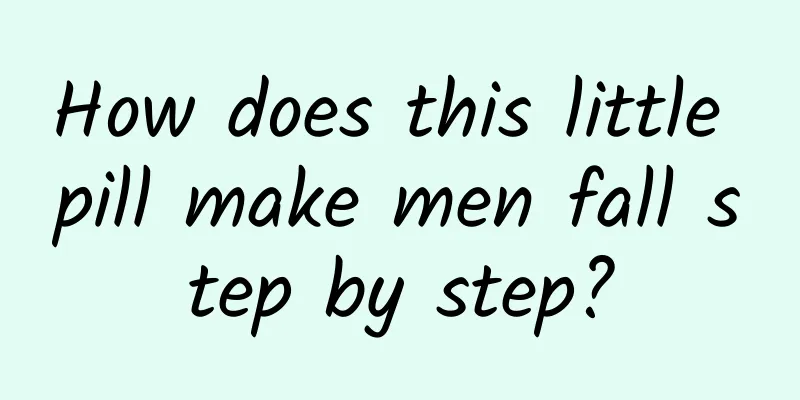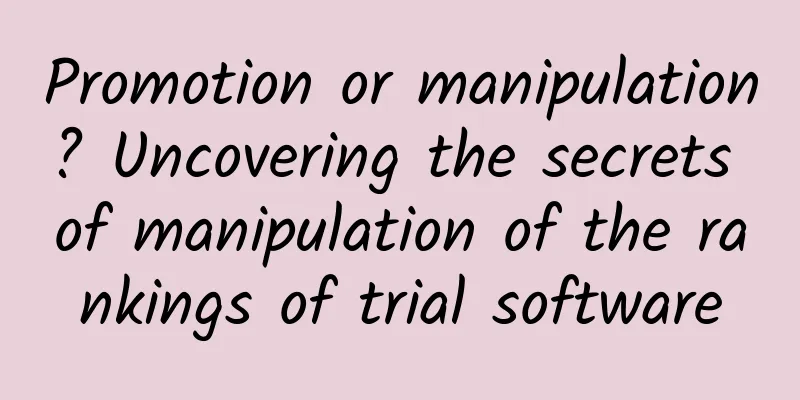A guide to planning online and offline events!

|
Everyone is familiar with event planning , but the effect of each event varies from person to person. If you search for activities and activity operations on search channels, you can see tens of millions of different types of activity plans. In my opinion, the underlying logic of all planning is similar, and they all revolve around five aspects: purpose, goal, creativity, plan, and execution. Excellent event planners are not just good at coming up with plans; they also need to have the ability to analyze data, conduct user research, and have market insights. Only in the planner’s own world can one know that event planning is a tedious and detailed job, and every successful event planner can almost be said to be omnipotent. 01 About event planning Taking e-commerce companies as a reference, the activities are divided into two parts, online and offline. Online activities include: User operation activities, user acquisition activities, user activation activities, GMV activities, big promotion activities, theme day activities, points marketing activities, gift marketing activities, social activities, community activities, integrated marketing communication activities, Weibo activities, cross-border alliance activities, etc. Offline activities include: industry conference public relations activities, exhibition activities, annual meeting activities, thank-you activities, meet-and-greets, flash mob events, special events, self-organized activities, PK competitions, etc. The slight difference between offline and online is that the content of online activities focuses on "creativity", "content", "marketing" and "interactivity". Offline activities are more inclined towards "exposure", "sense of participation" and "on-site effects". In terms of complexity, offline is slightly more complicated, after all, it involves cooperation negotiations, hotels, venues, material production, rehearsals, guest invitations, user invitations, game preparations, media invitations, celebrity performances, public relations and publicity, advance warm-up, on-site execution, etc. 02 Why do we need to conduct online activities Figuring out why you are doing an event and what your goal is is the most important factor in the success of the event. Take e-commerce online activities as an example: The purpose of doing activities is to improve a certain operational indicator in the short term. For example, simple explanations include:
For example, as an operator, after determining the purpose, I have to start thinking about the specific presentation of the activity. The purpose and goals of the activity are listed separately here because there are still differences between the two in the actual operation of the activity. Difference between Aim and Objective: The goal is the final result pursued in a short period of time. It is the concrete implementation of one's mission at a certain stage. For example, if one wants to attract 100,000 new users through a 3-day campaign, and the 100,000 is the goal, then the purpose is what one wants to do after reaching the goal. For example, after attracting 100,000 new users and using 100,000 users, what should we do? Without a goal, there is no purpose. Usually when we do an event, we plan an event or a series of events around a certain purpose. After we have this idea, we need to think deeply about the goal, time, form, promotion channel, etc. of the event. The activity goal is the dataization of the purpose. Here is a practical example: This month, the user operation of the APP needs to design activities to achieve "growth and attract new users". After clarifying the purpose of "attracting new users", the leader proposed that the goal of this activity is 80,000 "new users", and then these 80,000 new users are the purpose and the KPI. Taking e-commerce as the dimension, after clarifying the goals, what forms of activities are there?
What are the steps in a complete online activity process and what is the core of the operation? Confirm goals—event planning—event development—budget allocation—A/B testing—publicity warm-up—online promotion—data monitoring—results announcement—review and summary. The above is a comprehensive process of an activity. Of course, it covers many detailed links in the middle, and each link may be divided into many details, which also needs to be calculated based on the scale of the activity. When planning an event, you may want to consider: "Activity theme", "Activity plan", "Activity copy", push content in each link, social network, PUSH, SMS, pop-up window, H5, etc. Activity development may involve: Product "landing page production" model drawing. Landing page supporting facilities, pop-ups, PUSH, hourly reminders, push channels, etc. If you need to sign in for online promotion, it may involve: The registration mechanism, rules, number of participants in the event, date of prize drawing, and whether there are any task links, such as forwarding, accumulation, etc. The activities at the start-up stage need to involve: Advance warm-up, publicity, user interaction, PUSH reminders for events, whether the reminders are in the form of text messages, emails, in-site PUSH, or invitations for social media, etc. Personally, I think that today's e-commerce events with PUSH plus invitations are more attractive, and any "content" that is not conducive to users showing off is hooliganism. To grasp the user's psychology, imagine that if the user is willing to share it on WeChat Moments, will the exposure rate be higher? Based on the above summary, there are many important factors that affect an event, but the following four points are the core points of the entire event operation:
A complete online event can also be combined with a large-scale marketing festival. In psychology, there is a "psychological arousal" effect. Event planners should seize the current hot news and hot figures, combine them with the theme of their own event, and go with the flow to achieve the purpose of communication. Usually, when taking advantage of festivals, we should pay attention to: 1. Prepare for the event warm-up and launch in advance, usually 3 days, and at least 1 week for large events. 2. Deeply explore the best points of fit between activities and festivals and combine the two. 3. Be good at using festivals to target the target audience. 4. The operator can make a holiday list in advance, including holidays, cases, etc. Note on hotspot planning: In addition to these accidents, some hot events are usually urgent and unpredictable, while some are predictable (mobile phone releases on major platforms). Predictable ones can be preheated in advance, while unpredictable ones are relatively urgent. We should be good at paying attention to the attributes and skills of hot spots, which are roughly in three aspects:
About replay: A complete review of online activities is very important. Without a review and summary, the activity will get worse and worse. The review includes data analysis, process sorting, and personnel division of labor. The review summary can help us find the shortcomings of this activity, such as whether the goals of the activity have been achieved and how the completion status is? Whether the user interaction in the activity (landing page H5) is smooth, where it can be optimized, etc. What unexpected situations occurred during the event and what are the solutions to these emergencies? During which period of time does the activity data fluctuate most? A detailed analysis is conducted on the reasons that lead to the data fluctuations, dividing them into primary and secondary, internal and external factors, etc. The review and summary can help us understand whether the event has been copied by competitors. If so, we can innovate or increase the difficulty in some aspects next time. The summary of the event review is also to help us understand the interests and hobbies of mobile phone users (suggestions from user feedback during the event) and screen out high-quality channels to facilitate the promotion of the next event. 03Why do we need to do offline activities Offline activities are conducive to high-frequency interactions and play a significant role in brand building. In the past two years, more brands have crossed over to do offline business, such as Coffe Box Lian Coffee sponsoring the Puchi talk show, Didi holding an offline Tucao conference in 2018, and Mr. Zhou Hongyi's 360 gold medal speech event at the end of 2019. On the one hand, offline business has increased the sense of interaction between brands and users, and on the other hand, it has also shaped the brand. Offline is also very important for user experience. If it is in the form of sponsorship, it may not be felt much. If it is in the form of hosting, users will feel the most important aspects of word-of-mouth promotion from check-in, taking photos, tables, guests, speeches, hosts, lighting, stage design, interaction, lucky draws, etc. Features of brand pop-up stores: Pop-up stores are the most common in Sanlitun. For brands, pop-up stores can have a strong customer-attracting effect, which is a consensus in the industry. They can make brands floating "online" land in front of users. A single high-quality pop-up store can bring in new traffic compared to an IP exhibition, 2 cinemas, or even 6 chain restaurants. Brand conference features: Brands use conference features more often for "brand upgrades", "annual conferences", user award ceremonies, and even chartered exhibitions. Weibo holds its own conference every year, which mainly revolves around a forum in a certain vertical field and invites big Vs. On the one hand, it can shape the IP, and on the other hand, it can achieve publicity effects. Yunji upgraded its overall brand image in 2018 and booked the Hangzhou Exhibition Hall in order to create publicity and exposure. Take offline salon activity process as an example: I usually divide the activities into three major sections: before the activity, during the activity, and after the activity, and then subdivide them according to the major sections. If you want to do a good activity, the plan and timeline must come first. A completed plan includes: 1. Before the event: preparation and execution The preparation period includes: planning of the project proposal, time schedule, PPT for investment promotion, confirmation of venue, guests, etc. The implementation period includes: event copywriting, event-related materials, event registration and user check-in maintenance system, event publicity and promotion, and docking of various channels. 2. Timeline Assuming that the general plan and process of the event have been approved, it is recommended not to start working on it directly, such as materials, invitations and other work. The first thing to do is to plan a timeline. The purpose of planning a timeline is to give the event a clear rhythm. After all, a complete event cannot be fully responsible by one person, and some details may not be taken care of. 3. Investment plan If this meeting involves investment promotion, it is recommended to make an investment promotion plan, because every meeting definitely costs money. If you attract a few sponsors and each sponsor receives part of the funds, it can also reduce the cost of the event. A complete investment promotion PPT, without discussing other topics for the time being, must ensure and highlight the following aspects: the purpose of the event, the scale of the event, the guests of the event, the investment promotion standards, the investment promotion rights and benefits feedback, etc. It is important to highlight what I can provide and what I can help your brand solve. With PPT, both parties can also exchange resources during business negotiations. For example, I can help you with promotion for free, and I can provide venue support, etc. 4. Address, guests and venue confirmation Suppose we are holding a salon or a conference for thousands of people, Zhiyuan believes that the location and guests are very important. It is best to go and see the venue during the preparation period. It is best not to choose a location that is too remote, otherwise it will affect the effect of the marketing event and the overall rhythm. When choosing a venue, Zhiyuan usually considers the following when organizing an event:
When choosing a venue, you should consider the above factors and choose the one with the best price/performance ratio. The second factor is the guest. The guest speaker determines how many people will sign up for the conference. The choice of guest varies for different conferences. I usually choose the following:
Finding the right guests mainly depends on "personal connections", and secondly on "partners". If you become stronger, you will have more people helping you, and you can also accumulate some industry resources in your daily life. Once these details are settled, we can officially enter the preparation stage. What we need to do at this stage is publicity. And preparation, promotion may require materials, such as (H5, invitation letter), preparations include (flow chart, table card, background wall visual, PPT, etc.). 5. Activity content preparation The content includes the copywriting part. You can use the H5 format or various registration software, but the design and content preparation of the landing page are very important. The writing of the landing page copy has roughly these 6 characteristics: highlighting the theme of the event, highlighting the speakers, highlighting the content of the speech, highlighting the event process, highlighting the guide to participants, and highlighting the meeting time. If you write simply and casually, the number of views may not be too high and the user perception will be low. Usually, the registration methods for conferences are "Activity Line" and "Interactive Bar". If you want to use a third-party platform for unified registration, it is best to publish it in advance, and you need to make a first picture, etc. 6. Preparation of activity materials For salons or conferences with thousands of people, relatively speaking, there are fewer things to prepare. If you want luxury, you can put more effort into the venue layout. Usually, the materials used for an event include: event posters, guest posters, roll-up banners, invitations, banners, flyers, handbags, souvenirs, brochures, signboards, autograph walls, etc. I usually make deletions and additions to materials based on the budget and scale of the entire event. Essential items include event posters, on-site roll-up banners, sign-in background walls, etc. 7. Event registration and user maintenance If it is a conference with thousands of people, within a controllable range, it is recommended to start registration one month in advance, and give registrants a certain amount of time, such as whether they need to book tickets, whether they are attending the conference from out of town, etc. Once registration for the event begins and user registrations are accepted, user maintenance will be carried out. The purpose of user maintenance is to prevent people from forgetting about the event after registering, on the other hand, it can also provide a clear understanding of the participants, and thirdly, it can increase the attendance rate on site. The commonly used method at present is: "WeChat group", pulling users into the group. If you are on the registration platform, you can leave your contact information in the registration form, such as: "Please add the official WeChat after registration." This saves most of the time spent on making phone calls, sending text messages, etc. 8. Promotion and publicity The two most important parts of the entire event are on-site execution and publicity and promotion. The purpose of publicity is to increase exposure and attract more people to sign up, and the other is to allow people in the industry to see it and increase their own visibility. There are three common delivery methods: 1. Joint publicity with external media: This requires the event manager to contact BD to expand the business, and take the initiative to find the media for joint exposure with their own resources to achieve the effect of resource exchange. You can also choose to place community advertisements, subway advertisements, etc. If it is a conference for tens of thousands of people, you can choose this. If it is a conference for thousands of people, there is no need to waste money. 2. Promotion to registered users: You can ask registered users to help forward the event to attract more people interested in the event. You can also use preferential methods, such as giving discounts or cash back when you purchase through a certain link. 3. Industry organizations, KOL communities, and large self-media accounts: Find some large accounts and KOLs with similar themes or focusing on this field, make appropriate placements, and ask them to help promote or adopt a collective registration method. Some other methods: sending emails, one-on-one communication on WeChat, etc. can all be tried, but the results are average. Relatively speaking, the user experience is not very good, and it is a waste of efficiency. 9. Communication and docking among all parties After planning this event, you need to start connecting with guests, venues, and partners 3 days before the event starts, confirm the PPT, and whether it will be sent back to the organizer, who will review it and finally finalize the event process. You will find that in the communication process, executives usually pay more attention to efficiency, while some people tend to procrastinate because they are busy. When we were organizing events, we had people specifically responsible for managing the speakers and making sure the quality was guaranteed. 10.Prepare the day before the event The most important thing the day before is for the host to coordinate the process, arrange the venue, give out souvenirs, etc. If the event is large-scale, a rehearsal is recommended to ensure that everything goes well. The purpose of the rehearsal is to organize the division of labor among on-site personnel, debug audio equipment, test lighting and stage design, music, microphone debugging, and coordinate with the hotel for guidance, such as which floor the event will be held on, where the restroom is, and other details, so that you have a clear idea of them. Assuming it is a salon for 300 people, it can be simple, with a host, a guide, and the photography and videography can be done by your own people. If it is a large-scale event with thousands of people, it is best to find a special photography team, a jib, a stabilizer, a host position, and whether live broadcast is needed, etc., all can be improved. 12. Event site management Several important aspects are as follows: 1. The overall order of the event is very important. Whether it is a meeting, salon or conference, there will generally be noise on the scene. At this time, the host is needed to control the maintenance of order. 2. If it is a small event with about 200 people, the atmosphere on site is very important and interaction is very important. If it is an industry conference, it is not necessary, and more attention should be paid to order. 13. Media publicity The opinions and knowledge points expressed by important guests at the event, as well as the wonderful moments of the event, can all be compiled together and appropriate media publicity can be carried out to increase brand exposure. 14. Activity summary At the end of each event, we need to summarize what happened. For example, many people do not pay much attention to the fact that the venue will charge a "security fee", whether there are any unexpected situations at the event site, whether the materials have been used up and whether they need to be collected back, etc. We also need to do some user surveys as much as possible to listen to their opinions on the speakers, and whether the purpose of the event has been achieved. The above are the 14 complete aspects of an offline activity. Compared with online activities, offline activities are more laborious. For example, Tmall’s festivals and offline flash mobs require preparation more than half a year in advance. Offline activities cannot directly bring sales or growth, but they can bring exposure to the brand. Writing encouragement: 1. Compared with offline activities, online activities focus more on growth and attracting new customers, while offline activities focus more on exposure, creating momentum, and establishing an image. Often, the combination of the two will produce better results. 2. As a marketing worker, I would like to give some advice to those who have just stepped into the event planning position. Don’t be obsessed with making plans. Instead, you should exercise your comprehensive abilities. It is important to learn more, especially budgeting, resource development, negotiation skills, etc. Author: Source: |
<<: Real KOC and fake traffic pool
Recommend
What marketing trends will emerge in 2019?
What marketing trends will emerge in 2019? If wha...
Learn the basics of stock trading from Chen Kai
Learn the basics of stock trading with Chen Kai. ...
An inconspicuous cooking habit can cause osteoporosis in the whole family
When it comes to osteoporosis, the first thing ma...
When the AI era comes, the "editors" you often mention are a little "numb"...
Author: Duan Yuechu Nowadays, the rapid developme...
Galaxy Note4's four tricks
Samsung's new generation of giant screen flags...
The internet-famous wolf in Kekexili was hit and killed by a car? This may be due to feeding
This Monday, many netizens posted on social media...
If China does not build OLED panel lines in China, the Chinese color TV industry may regret it if it does not fear LG's future
As a core supplier of large-size OLED panels, LG ...
More than a decade ago, Korean films also experienced the same kind of capital madness in China today.
"Now all kinds of capital, including real es...
How should an APP build a user growth system? Share 6 points!
Just as KOL corresponds to the herd effect in psy...
Medical Device Review: The Wonderful Principle of Ventilators in the Fight against the New Coronavirus
Source: China Device Evaluation...
How to write a hit title that generates traffic?
How important is a good title? David Ogilvy, the ...
Learn the detailed steps of WeChat applet development
Many people hope to create a WeChat mini program ...
How to make a good chess and card game? Just being fun is not enough
The development of the Internet has also led to t...
About the personal experience of a programmer taking a private job
[[142297]] I just graduated in 2013 and worked in...
Online promotion channels for product operation and promotion plans!
In the mobile Internet industry, the market for g...









